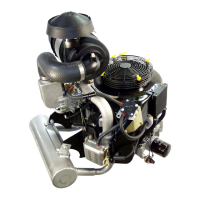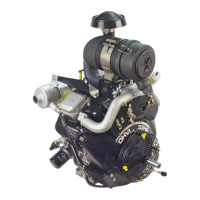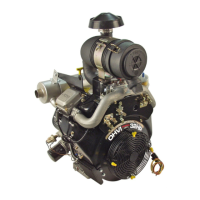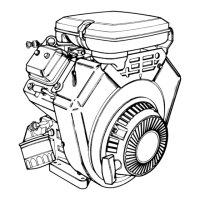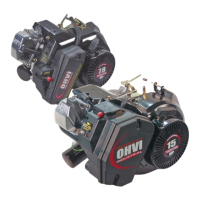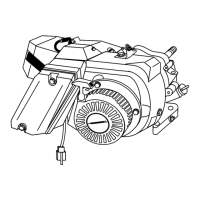SECTION 6: ELECTRIC STARTER
6-1
SECTION CONTENTS
PAGE
GENERAL INFORMATION................................................ 6-1
TROUBLESHOOTING ...................................................... 6-1
TEST EQUIPMENT .......................................................... 6-1
TEST STARTER MOTOR .................................................. 6-2
Testing Starter Solenoid.............................................. 6-2
BATTERY INFORMATION ................................................ 6-2
Installation ................................................................ 6-3
Checking Battery ...................................................... 6-3
Testing Battery .......................................................... 6-4
Battery Recommendations ........................................ 6-4
Battery Cable Recommendations................................ 6-4
GENERAL INFORMATION
The starter motor uses a gear type engagement method, sim-
ilar to an automobile starter. When the starter motor is activated,
the pinion gear engages a ring gear attached to the engine
flywheel and cranks the engine.
Figure 6-1. Starter Motor
TROUBLESHOOTING
NOTE: If a starting problem is encountered, the engine
itself should be thoroughly checked to eliminate it as the
cause of starting difficulty. It is a good practice to check
the engine for freedom of rotation by removing the
spark plugs and turning the crankshaft over slowly by
hand, to be sure it rotates freely.
WARNING: DO NOT ROTATE ENGINE WITH ELECTRIC
STARTER WITH SPARK PLUGS REMOVED. ARCING AT
THE SPARK PLUG ENDS MAY IGNITE THE GASOLINE
VAPOR EXITING THE SPARK PLUG HOLE.
ENGINE CRANKS SLOWLY
:
a. Additional load affecting performance (see note above).
b. Discharged battery.
c. Faulty electrical connection (battery circuit).
d. Discharged battery (see alternators).
e. Dirty or worn starter motor commutator, bearing, weak
magnets, etc.
f. Worn brushes or weak brush spring.
g. Wrong oil viscosity for temperature expected.
h. Battery leads too long or wire too small.
i. Battery too small.
ENGINE WILL NOT CRANK:
a. Faulty safety interlocks.
b. Discharged or defective battery.
c. Faulty electrical connections.
d. Faulty starter motor switch (open circuit).
e. Open circuit in starter motor.
f. Brushes sticking, etc.
g. Faulty solenoid.
ST
ARTER MOTOR SPINS BUT DOES NOT CRANK ENGINE:
a. Sticking pinion gear due to dirt.
b. Damaged pinion or ring gear.
c. Battery faulty or damaged.
d. Incorrect rotation due to
reversed motor
polarity – all motors
rotate counterclockwise viewed from pinion gear.
e. Damaged solenoid
STAR
TER MOTOR SPINS BUT WILL NOT STOP:
a. Defective starter switch.
b. Solenoid stuck engaged.
TEST EQUIPMENT
The following is a list of equipment recommended to test and
repair starter motors.
DIGITAL MULTIMETER:
A digital multimeter (VOM) may be used to read volts, ohms,
amperes and test diodes (rectifiers), Figure 6-2.
NOTE: The Digital Multimeter is equipped with two fuses
to prevent damage to the meter in the event that the input
limits are exceeded. If the meter displays a reading of 0.00
when testing DC output, check fuses in meter. Refer to
VOM operators manual for procedure for checking fuses.
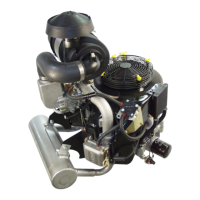
